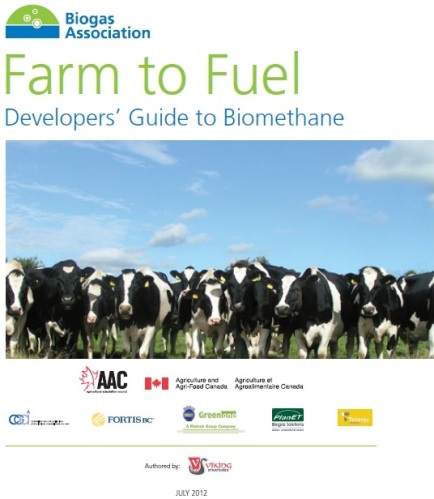Report: Farm to fuel - developers' guide to biomethane
Biogas Association, July 2012

The Farm to Fuel: Developers’ Guide to Biomethane was created to build the production of biomethane in Canada. The Guide helps farmers determine if biomethane production is a good fit for their farm and operations. For those farmers considering developing biogas systems, and upgrading the biogas to biomethane, the Guide walks them through the planning process, offering a check-list of questions to ask relevant technology and service providers. It also alerts farmers to important considerations, such as feedstock, financing, permits and safety.
Biomethane poses a new opportunity for farmers in Canada. There is significant potential for long-term financial gain where farmers can sell their biomethane to utilities or customers willing to pay a premium over conventional natural gas. Additional socio-economic and environmental advantages of biogas in general to farmers include:
- Improved water quality due to virtual elimination of pathogen load of manure subsequently reducing the risk of nitrogen and phosphorous leaching
- Reduced greenhouse gas emissions from livestock
- Enhanced fertilizer for crops by recovering nutrients in organic materials
- Reduced greenhouse gas emissions by replacing fossil fuel consumption with renewable energy consumption
- Greater on-farm innovation and job creation
- Reduced odour and pathogens
Biomethane projects require considerable research and planning and are tailored to large farm operations that have access to significant quantities of available feedstock (both on and off the farm) as well as the financial capability of entering a multi-million dollar investment.
This Guide is written in simple terms, avoiding overly technical terminology wherever possible and points you in the direction of further resources if you would like to investigate any elements in more detail.
